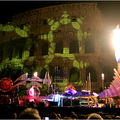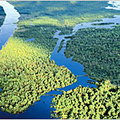
Old standards are standard in the jukebox at the bohemian bar Goupil le Fol.
SNOOTY travelers could be forgiven for overlooking Brussels, a European capital whose iconic monument is a 17th-century bronze statue of a little boy urinating into a fountain. But travelers who ignore Brussels, home of the European Union, twice-fried French fries and the Surrealist painter René Magritte, do so at their peril. For one thing, there is the food — a veritable galaxy of Michelin stars. Then there is the beer: more than 600 varieties, including ales brewed by monks. Add to that a thriving design scene, and the city — once dismissed as a provincial and humorless wasteland — is finally making cultural waves. Just join the crowds in front of the Manneken-Pis, the pixyish statue, and you'll get the idea. Locals delight in dressing up the young boy as Elvis or, sometimes, in a giant condom.
Friday
5 p.m.
1) BEERS ON THE GRAND' PLACE
For centuries, tourists have reportedly fainted when confronted with the sheer beauty of Florence. This won't happen in Brussels. The city does not have the Uffizi Gallery or Michelangelo's “David.” But it does have the Grand' Place, a truly marvelous square in the city's center. Brave the hordes of tourists (and the kitschy lace shops and overpriced seafood joints nearby) to drink a Trappist beer at Le Roy d'Espagne (Grand' Place 1; 32-2-513-0807, www.roydespagne.be), an atmospheric bar in one of the Grand' Place's grandest guild houses. Expect pigs' bladders hanging from the ceiling and harried waiters in long white aprons that match their long faces. Grab a seat on the outdoor terrace so you can gawk at the Baroque square.
8 p.m.
2) RABBIT STEW
Brussels is a foodies' paradise, and you'll struggle to eat a bad meal. A standout among the hundreds of traditional Belgian brasseries is Les Brassins (36, rue Keyenveld; 32-2-512 6999; www.lesbrassins.com), a lively place that serves 50 different brews and Belgian classics like lapin à la Kriek (rabbit stewed in flavored beer) and stoemp (a winter stew with potatoes, carrots, onion sauce and sausages) for under 15 euros ($20, at $1.35 to the euro). The restaurant is at the end of a hard-to-find back street in Ixelles, a neighborhood popular with expatriates. After your meal, wander up the street and find the plaque marking the birthplace of Audrey Hepburn.
Midnight
3) JAZZY BARS
In a city full of alluring bars, the granddaddy of cool may be the L'Archiduc (6, rue Antoine Dansaert; 32-2-512-0652; www.archiduc.net), in the downtown area near the stock exchange. Ring the doorbell, go through a steel bubble swinging door and marvel at the Art Deco room, furnished with high ceilings and an undulating bar. Nazis were rumored to have frequented the bar during the German occupation; today, the clientele consists mainly of goateed beatniks and media types. L'Archiduc is particularly popular with jazz fans — Miles Davis once jammed there — and impromptu jam sessions often take place on weekends. A warning: the service can be nonchalant, verging on nonexistent.
SATURDAY
10 a.m.
4) BREAK FOR NOUVEAU
If the institutional modernism of the European Union's sprawling offices leaves you cold, escape can be found in the city's Art Nouveau, the flowery architectural style popular at the beginning of the 20th century. One of the genre's finest practitioners, and a father of Belgian Art Nouveau, was Victor Horta. Visit his home and studio, which have been turned into the Musée Horta (25, rue Américaine, St.-Gilles; 32-2-543-0490; www.hortamuseum.be; hours are 2 to 5:30 p.m., but earlier tours can be arranged by e-mail at least a week in advance). The exterior is typically Belgian: understated. The interior hides lots of astonishing details, including a grand stairwell made of marble and wrought iron that undulates into the expressive shapes of an abstract painting. Natural light pours down from a stained-glass canopy onto the floral mirrors, Tiffany lamps, mosaic floors and carved banister. The effect is dreamlike — until the hordes of tourists bring you back to earth.
Noon
5) MOULES FRITES, ANYONE?
For lunch (from July 17, when it reopens), head to the 80-year-old Aux Armes de Bruxelles (13, rue des Bouchers; 32-2-511-5550; www.armebrux.be), near the Grand' Place, which has some of the freshest buckets of mussels, complete with French fries and mayonnaise. Real Bruxellois eat the first mussel with their fingers, and use the empty shell as a utensil for scooping up the rest. Don't forget to mop up the mussel soup with a hunk of crusty bread. If you want a spot away from the tourists, moules frites aficionados swear by Au Vieux Bruxelles (35, rue St.-Boniface; 32-2-503-3111; www.auvieuxbruxelles.com) in the heart of a lively Congolese neighborhood, which serves delectable mussels made with beer, curry and blue cheese, for about 20 euros.
2 p.m.
6) SHOPPING À LA BELGE
Bargain hunters throughout Europe flock to the Place du Jeu de Balle for a flea market in Brussels' oldest quarter, the working-class but quickly gentrifying Marolles. The market has everything from African masks and retro cinema chairs to fake reproductions of old Belgian masters like Bruegel. The surrounding streets — Rue Blaes and Rue Haute — are peppered with a quirky mix of antique furniture shops, galleries and cafes. For more froufrou surroundings, walk five minutes north to the Sablon, an upscale district frequented by bourgeois grannies whose outfits match their French poodles. The district's jewel is the Place du Petit Sablon, a small and picturesque park framed by an imposing Gothic church, with railings by the Art Nouveau master Paul Hankar, as well as statues of famous Belgians you've never heard of.
6 p.m.
7) SWEET BREAK
Get a chocolate boost at Pierre Marcolini (1, rue des Minimes; 32-2-514-1206; www.marcolini.be), one of the best places to buy chocolate in a city that takes the cocoa bean very seriously. An assortment of 33 chocolates, including truffles and dark chocolate, costs 16.50 euros.
9 p.m.
8) ROYAL CUISINE
Some restaurants in Brussels leave you feeling giddy, if not a bit ecstatic. Museum Brasserie (3, place Royale; 32-2-508-3590; www.museumfood.be), a new place from the Flemish chef Peter Goossens, is among them. (His other restaurant, Hof van Cleve, has three Michelin stars.) Set in a Victor Horta building that's part of the Royal Museums of Fine Arts, the minimalist interior is dominated by immense black chandeliers and attracts Flemish hipsters and matrons alike. The kitchen specializes in updated Belgian classics like eel in green sauce, veal kidneys with Ghent mustard and spit-roasted cockerel — all accompanied by perfect frites (Mr. Goossens started his culinary career peddling fries). The wine cellar, encased in sleek glass, offers a nice mix of French and New World varieties, including a delightful Flemish chardonnay with hints of seaweed. For dessert, order the waffles from Liège, a town in Belgium, which manage to be baroque without being too sweet. Dinner for two, not including wine, runs about 70 euros.
Midnight
9) BOHEMIAN BROTHEL
For good times, stumble over to Goupil le Fol (22, rue de la Violette; 32-2-511-1396), an eccentric, three-story bar housed in a former brothel that looks like a cross between an opium den and a 1970s porno set. The walls are covered with old paintings of nudes and lurid landscapes, as well as vinyl LPs. Sink into one of the couches, order one of the owner's favorite fruit wines and party into the wee hours, with an Edith Piaf song blaring from a nearby jukebox. Those with less bohemian instincts should stay downstairs, as the clientele gets more and more risqué the higher you climb.
Sunday
11 a.m.
10) A FAMILIAR BRUNCH SPOT
You can find this bakery chain in Manhattan or Paris, but the original Le Pain Quotidien is in Brussels and remains one of the better brunch spots in a town that's not great at doing brunch. The flagship bakery is on the Grand Sablon (11, rue des Sablons; 32-2-513-5154; www.lepainquotidien.com) with large pine tables crammed with jams, chocolates and bread. The wait can be irksome, but the farmers' bread is hot from the oven, coffee is served in large bowls and the cheese tartines are always fresh. Plus, on those rare Brussels days when the sun is out, the retractable roof lets in a slice of heaven. Breakfast for two, about 40 euros.
1 p.m.
11) PICNIC AT A CHATEAU
For pastoral escape, stroll the grounds of the Château de la Hulpe (111, chaussée de Bruxelles; 32-2-653-6404; www.chateaudelahulpe.wallonie.be), an enchanting French-style castle built in 1842 that overlooks 561 acres of woods and ponds on the border of Brussels' Forêt de Soignes. The castle is not generally open to the public, but the grounds — adorned with rhododendrons and azaleas — are more than worth the 25-minute train ride. And the farmhouse of the main castle houses the Fondation Folon (6A, drève de la Ramée, La Hulpe; 322-653-3456; www.fondationfolon.be), which shows the work of the prolific Belgian artist Jean-Michel Folon.
VISITOR INFORMATION
SN Brussels Airlines and American Airlines have daily flights from Kennedy Airport in New York to Brussels Airport, while Continental Airlines flies from Newark. A recent Web search for early August showed round-trip fares starting at $1,037.
The best way to get into central Brussels is on the 30-minute Brussels Airport Express to Central Station. It runs every 15 minutes and costs 3 euros, or $4.05 at $1.35 to the euro.
Brussels hotels are expensive, thanks to the constant influx of Armani-clad diplomats. One bargain — starting at 95 euros for a double — is the Baroque Hotel Mozart (23, rue du Marché aux Fromages; 32-2-502-6661; www.hotel-mozart.be), which has 50 comfortable, compact rooms.
If you packed Armani, try the Jolly Hotel du Grand Sablon (2/4 rue Bodenbroek, 800-221-2626, www.jollyhotels.com/eng), a luxurious hotel on a chic square within walking distance of the Royal Palace, the Grand' Place and the main museums. Summer specials start at 99 euros.





